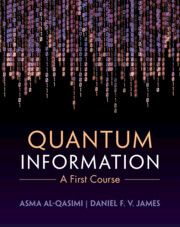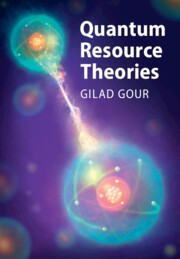Refine search
Actions for selected content:
8 results

Quantum Information
- A First Course
-
- Published online:
- 17 October 2025
- Print publication:
- 26 June 2025
-
- Textbook
- Export citation
3 - Two Qubits and Entanglement
-
- Book:
- Quantum Information
- Published online:
- 17 October 2025
- Print publication:
- 26 June 2025, pp 51-77
-
- Chapter
- Export citation

Quantum Resource Theories
-
- Published online:
- 03 May 2025
- Print publication:
- 10 April 2025
1 - Introductory Material
-
- Book:
- Quantum Resource Theories
- Published online:
- 03 May 2025
- Print publication:
- 10 April 2025, pp 1-20
-
- Chapter
- Export citation
2 - Review of Quantum Mechanics for Quantum Computing
-
- Book:
- Building Quantum Computers
- Published online:
- 29 November 2024
- Print publication:
- 11 July 2024, pp 12-46
-
- Chapter
- Export citation
11 - Bridging Many-Body Quantum Physics and Deep Learning via Tensor Networks
-
-
- Book:
- Mathematical Aspects of Deep Learning
- Published online:
- 29 November 2022
- Print publication:
- 22 December 2022, pp 439-474
-
- Chapter
- Export citation
14 - More-than-Human Collectives in Richard Powers’ The Overstory and Vandana Singh’s ‘Entanglement’
- from Collective Climate Action
-
-
- Book:
- The Cambridge Companion to Literature and Climate
- Published online:
- 31 March 2022
- Print publication:
- 07 April 2022, pp 214-226
-
- Chapter
- Export citation
7 - Quantum Entanglement
-
- Book:
- Do We Really Understand Quantum Mechanics?
- Published online:
- 01 February 2019
- Print publication:
- 14 February 2019, pp 189-222
-
- Chapter
- Export citation
